Achieving picture-perfect macarons with their signature smooth tops and delicate “feet” is a coveted skill for many bakers. One of the most common yet overlooked obstacles to macaron perfection is the quality of your almond flour. This essential guide provides an easy-to-follow tutorial on how to dry oily almond flour, a crucial step to prevent common issues like blotchy, wrinkly macaron shells and ensure your baking endeavors are a success.

What is Almond Flour? A Baker’s Essential
Almond flour is a popular ingredient in modern baking, especially cherished for its versatility and nutritional profile. It is made from blanched almonds (almonds with their skins removed) that are then finely ground into a powder-like consistency. This delicate flour is a staple in gluten-free baking, offering a low-carb alternative to traditional wheat flours.
Beyond its gluten-free properties, almond flour adds a rich, nutty flavor and a tender crumb to baked goods. It’s particularly famous as the primary ingredient in delicate French macarons, where its quality significantly impacts the final product. Understanding its characteristics, particularly its oil content, is key to mastering these notoriously finicky pastries.

The Critical Role of Almond Flour Quality in Baking
The success of many recipes, especially delicate confections like macarons, hinges directly on the quality of your almond flour. Oily almond flour is a common culprit behind frustrating baking mishaps, leading to soft, fragile macaron shells with thin, wrinkly tops that collapse easily. This excess oil interferes with the delicate meringue structure, preventing it from forming the stable framework needed for smooth, hollow shells and distinct “feet.”
To prevent these issues, it’s paramount to use almond flour that is light, fluffy, and not heavy or greasy. Properly dried almond flour ensures better aeration, which is vital for the desired texture and appearance of your baked goods. If your almond flour feels heavy or dense, it likely contains too much oil or moisture.
How to Test for Oily Almond Flour
A simple yet effective test can help you determine if your almond flour is too oily for baking. Take a small handful of almond flour and give it a light squeeze in your palm. If the flour clumps together and holds its shape in a ball, it’s an indication that your almond flour is overly oily and would benefit from the drying process. Fresh, properly dried almond flour should remain loose and powdery, even after being gently squeezed.
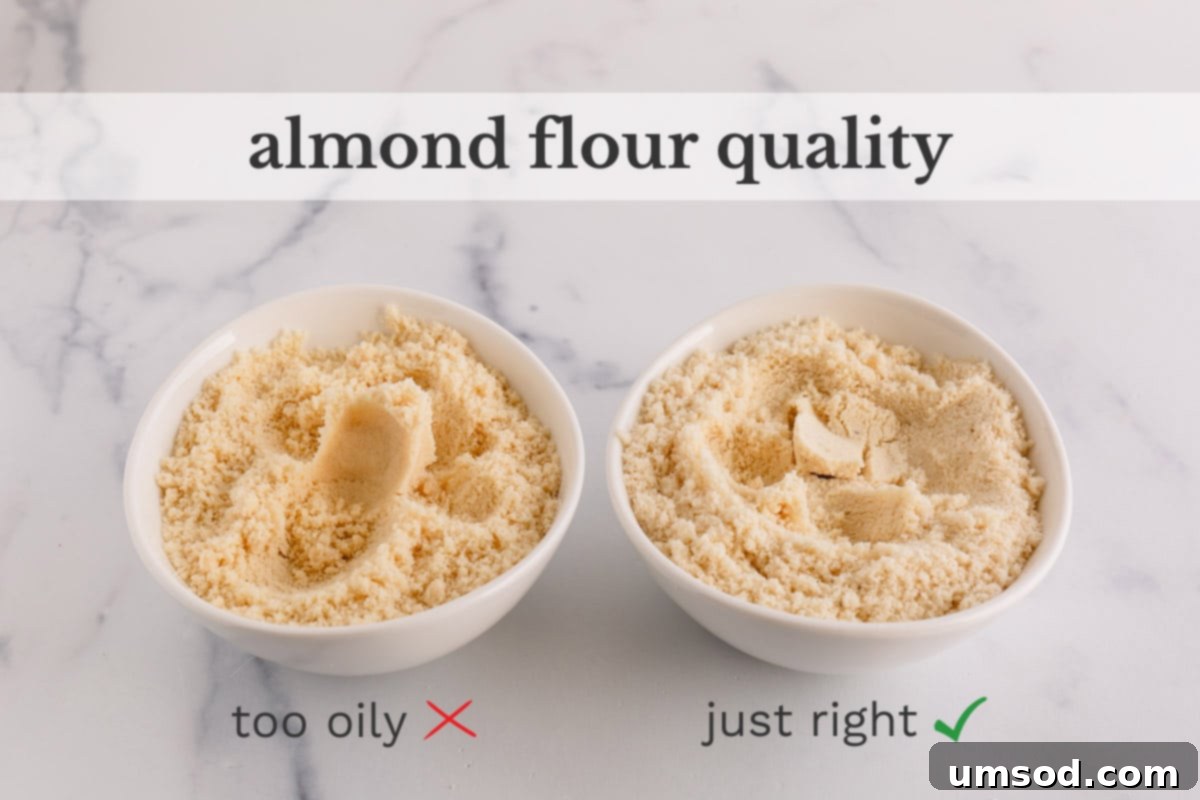
Identifying Old or Oily Almond Flour: What to Look For
Beyond the squeeze test, several other signs can indicate that your almond flour is old, excessively oily, or has started to go rancid. Being able to identify these clues can save you from wasted ingredients and disappointing baking results:
- Texture: Oily or old almond flour often resembles heavy, wet sand. It lacks the light, airy feel of fresh flour.
- Clumps: An abundance of noticeable clumps within the flour is a strong indicator of excess moisture or oil.
- Color: While fresh almond flour is a light beige, older or oilier flour may develop a distinct yellow tint due to oxidation of its fats.
- Odor: Always check for any unusual odors. Rancid flour will have a bitter, sour, or unpleasant smell, which can quickly ruin the flavor of your baked goods.
- Mold: Although less common, any visible signs of mold mean the flour must be discarded immediately.
On the contrary, fresh, high-quality almond flour should exhibit these characteristics:
- It feels fluffy and light to the touch.
- It boasts a consistent, light beige color.
- It does not clump into a ball when given a light squeeze.
Prioritizing fresh, properly handled almond flour is the first step towards achieving excellent baking outcomes.
How to Dry Oily Almond Flour: A Step-by-Step Guide
This simple yet effective method will help extract excess oil and moisture from your almond flour, preparing it perfectly for even the most delicate recipes like macarons.
Preheat your oven to a low temperature: 300°F (150°C). This gentle heat is crucial to dry the flour without toasting it.
- Prepare your baking sheet: Line a large baking sheet with a couple of layers of paper towel. The paper towels will act as an absorbent layer, drawing out the oil during the heating process.
- Spread the flour evenly: Carefully spread the oily almond flour in a thin, even layer directly over the paper towel. This ensures uniform drying and maximum oil absorption.
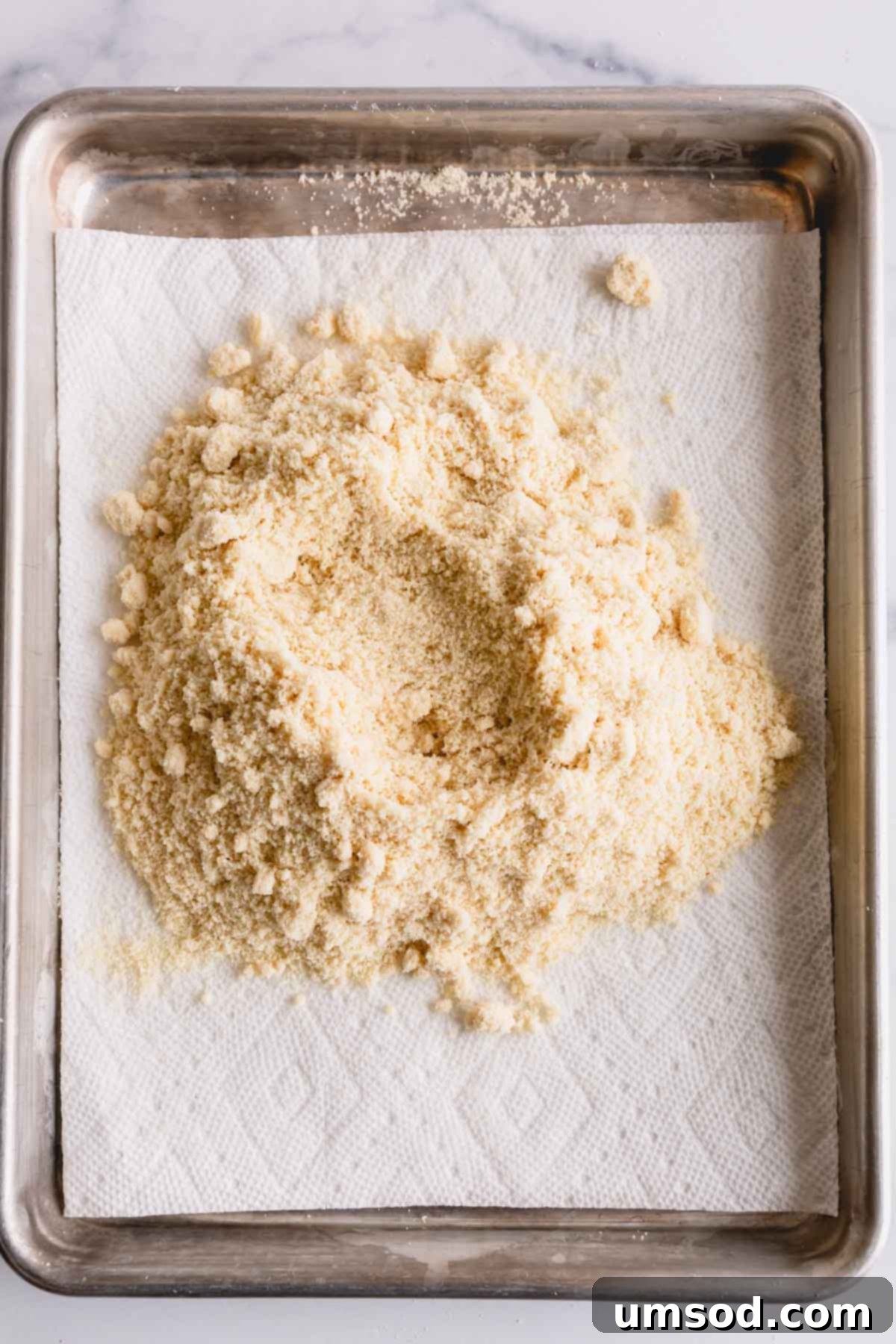
- Add a top layer: Place another couple of layers of paper towel directly over the almond flour. This creates a sandwich effect, with the flour nestled between two absorbent layers.
- Apply gentle pressure: Put a second baking sheet directly on top of the paper towels. This gentle pressure helps compact the flour slightly and maximizes contact with the absorbent paper, encouraging more efficient oil extraction.
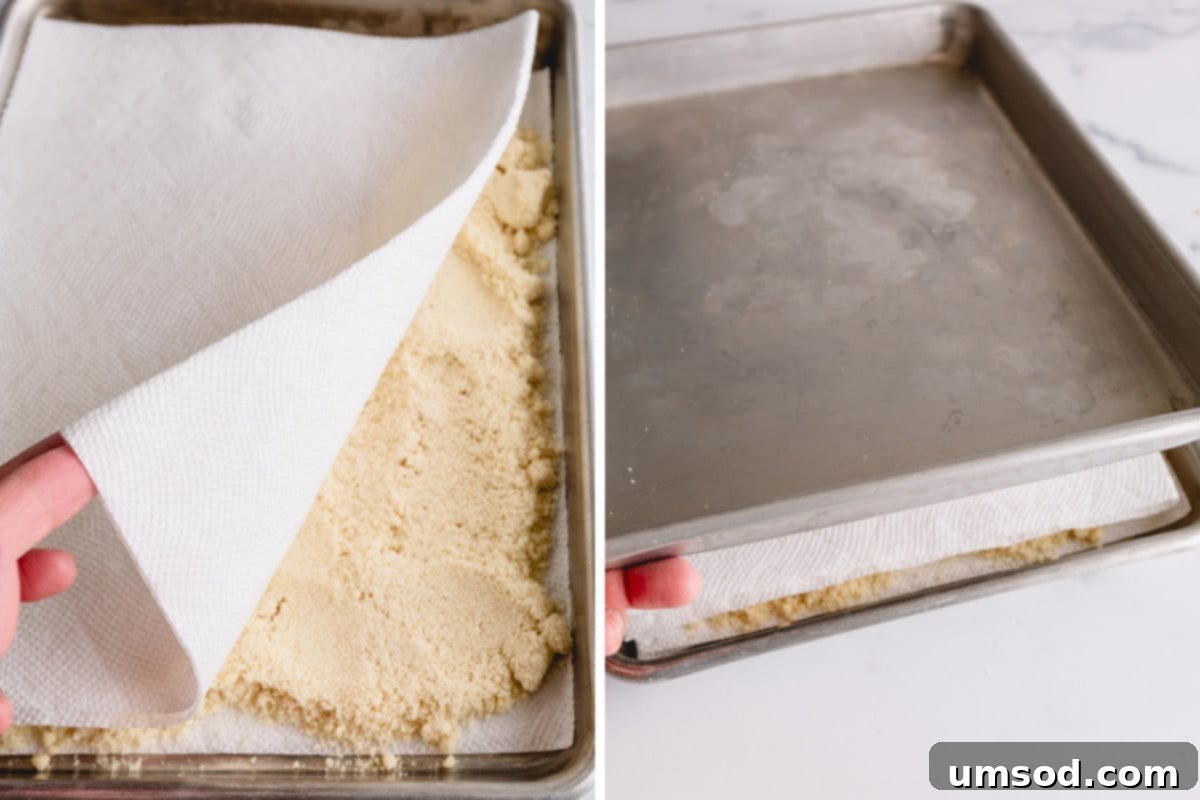
- Bake: Place the stacked baking sheets in the preheated oven and bake for 20-25 minutes. The low temperature gently warms the flour, making the oils more mobile and easier for the paper towels to absorb.
- Cool completely: Once baked, remove the assembly from the oven. Allow the almond flour to cool completely with the paper towels and top baking sheet still in place for at least 30 minutes. This cooling period is essential for further oil absorption.

Pro Tip: Maximize Oil Absorption During Cooling
For even better results, consider placing something heavy (like a cast iron pan or a few cookbooks) on top of the upper baking sheet while the flour cools. This additional weight enhances the pressure, helping the paper towels absorb even more excess oil from the almond flour.
- Reveal and fluff: Once the almond flour is completely cool, carefully remove the top baking sheet and the layers of paper towel. You will notice the paper towels are stained with absorbed oil. Use a spoon or spatula to gently fluff up the now-dried almond flour.

It’s often surprising to see just how much oil the paper towels have absorbed, even from flour that didn’t seem exceptionally oily at first. This visual evidence highlights the effectiveness of this simple drying technique in transforming your almond flour into a superior baking ingredient.

Optimal Storage for Almond Flour: Preserving Freshness and Quality
Properly storing almond flour is paramount to maintaining its freshness and extending its shelf life. Unlike all-purpose flour, almond flour has a higher fat content, making it more susceptible to spoilage and rancidity. The delicate oils in almond flour can quickly oxidize when exposed to air, light, and heat, leading to an unpleasant bitter taste that can compromise your baked goods.
Short-Term Storage (Up to 1-2 Months)
- Airtight Container: Always store almond flour in an airtight container. This minimizes exposure to oxygen, which is a primary contributor to rancidity. Glass jars with tight-fitting lids or heavy-duty plastic containers work well.
- Cool, Dark Place: An ideal location for short-term storage is a cool, dark pantry or cupboard, away from direct sunlight, heat sources (like ovens or stovetops), and strong odors. Stable, cool temperatures slow down the oxidation process.
- Avoid Moisture: Ensure the storage environment is dry, as moisture can lead to clumping and mold growth.
Long-Term Storage (Beyond 2 Months)
For maximum freshness and to significantly extend its shelf life, refrigeration or freezing is highly recommended for almond flour.
- Refrigerator: Storing almond flour in the refrigerator can extend its freshness for several months (typically 4-6 months). The cooler temperatures dramatically slow down the oxidation of fats, preserving the flour’s flavor and quality. Ensure it’s in an airtight container to prevent it from absorbing odors from other foods in the fridge.
- Freezer: The freezer is the absolute best option for extending almond flour’s shelf life, allowing it to last for several months up to a year or even longer. Again, an airtight, moisture-proof container or heavy-duty freezer bag is crucial to prevent freezer burn and moisture absorption. A great advantage of freezing almond flour is that there’s no need to thaw it before use; it doesn’t freeze solid and remains loose, allowing you to measure and use it directly from the freezer in most recipes. This convenience makes it an excellent choice for bulk purchases or infrequent use.
Always inspect your stored almond flour before use. If you notice any signs of clumping, discoloration, or a bitter/sour smell, it’s best to discard it and use a fresh batch. Investing a little time in proper storage ensures your almond flour is always ready to deliver exceptional results in your baking.
Explore More Delicious Almond Flour Recipes
Almond flour is a versatile ingredient that shines in a variety of sweet and savory dishes. Once you’ve mastered drying your almond flour, you’ll be ready to explore a world of delightful recipes. Here are some other fantastic creations where almond flour plays a starring role, offering a gluten-free option with incredible flavor and texture:
- Almond Brownies: Experience rich, fudgy brownies with a delicate almond twist.
- Almond Spritz Cookies: Perfect for holidays, these buttery cookies melt in your mouth.
- Almond Yogurt Cake: A moist and tender cake, subtly flavored with almond.
- Easy Almond Cookies: Simple to make, these classic almond cookies are always a crowd-pleaser.
- Brownie Cookies From Scratch: The best of both worlds – chewy brownie texture in a cookie form.
- Classic Linzer Cookies: Elegant and delicious, these sandwich cookies are a timeless treat.
Drying your almond flour is a small step that yields significant rewards, especially when tackling these exquisite recipes. Enjoy your baking journey!
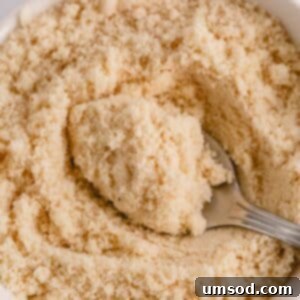
How to Dry Oily Almond Flour
Shinee Davaakhuu
5
25
30
Comment
Print Recipe
Ingredients
- Oily almond flour (as needed)
Equipment
- 2 baking sheets
- Paper towel
Instructions
- Preheat the oven to 300°F (150°C).
- Line a baking sheet with a couple of layers of paper towel.
- Spread the oily almond flour evenly right over the paper towel.
- Place another couple of layers of paper towel over the almond flour.
- Put another baking sheet on top.
- Bake for 20-25 minutes.
- Cool the almond flour with the paper towels and baking sheet on top for at least 30 minutes. (TIP: You can also place something heavy on top of the baking sheet to help absorb the excess oil while cooling.)
- Once cooled completely, remove the baking sheet on top and the paper towel.
⭐️ Did you make this recipe?
Please leave a review and let us know how you liked it!
Dessert
American
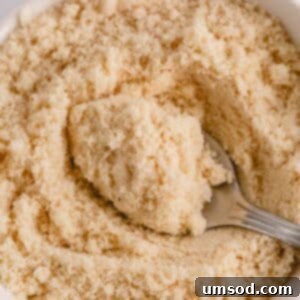
Did you make this?
Leave a rating and your feedback. Thank you!
